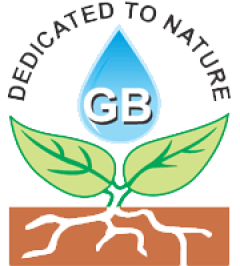Description
Pseudomonas species are considered effective biopesticides in agriculture due to their ability to suppress harmful pests and pathogens without the environmental and health risks associated with chemical pesticides. Here’s how Pseudomonas contributes as a beneficial biopesticide:
1. Biocontrol of Plant Pathogens
- Antagonistic Properties: Pseudomonas species, especially Pseudomonas fluorescens and Pseudomonas putida, produce a wide range of antimicrobial compounds, such as antibiotics (e.g., pyoluteorin, phenazine), siderophores, and enzymes that inhibit or kill plant pathogens like Fusarium, Rhizoctonia, Pythium, and Phytophthora. These compounds target the pathogens directly, reducing their ability to infect crops.
- Competition for Resources: Pseudomonas species also outcompete harmful microorganisms for space and nutrients, reducing pathogen colonization on plant roots and surfaces.
2. Production of Antifungal and Antibacterial Metabolites
- Antibiotics: Pseudomonas species produce a variety of natural antibiotics, such as pyocyanin and 2,4-diacetylphloroglucinol, that are toxic to a wide range of plant pathogens. These antibiotics can effectively control both fungal and bacterial diseases in crops.
- Volatile Organic Compounds (VOCs): Some Pseudomonas species emit VOCs that possess antifungal and antibacterial properties, further aiding in the suppression of pathogens.
3. Induced Systemic Resistance (ISR)
- Enhanced Plant Defense: When plants are exposed to Pseudomonas species, they can activate their immune system, a process known as Induced Systemic Resistance (ISR). This leads to a broader, long-lasting resistance against various biotic stresses, including pathogen attacks, improving plant resilience and reducing the need for chemical fungicides.
4. Nutrient and Iron Competition
- Siderophore Production: Pseudomonas produces siderophores, which are compounds that bind to iron in the soil. Iron is a vital nutrient for pathogens, so by binding it, Pseudomonas deprives harmful microorganisms of this essential resource, thus inhibiting their growth and spread. This is particularly useful in controlling soil-borne diseases.
5. Degradation of Toxins and Pesticides
- Bioremediation: Certain Pseudomonas strains have the ability to break down harmful chemicals and toxins in the environment, including pesticides, herbicides, and other organic pollutants. This bioremediation ability contributes to healthier soils, reducing contamination and improving the effectiveness of biopesticides.
6. Biofilm Formation for Protection
- Colonization of Plant Surfaces: Pseudomonas species can form biofilms on plant roots and surfaces, which acts as a protective barrier against pathogen attack. Biofilms create a physical shield that prevents harmful microorganisms from adhering to plant tissues, offering a defense mechanism that lasts longer than other treatments.
7. Effective Against Both Soil-Borne and Foliar Pathogens
- Root and Soil Protection: Pseudomonas species can be applied to the soil to protect against root pathogens. Their ability to thrive in the rhizosphere (root zone) allows them to prevent root diseases, such as those caused by Fusarium and Rhizoctonia.
- Foliar Protection: In addition to protecting roots, Pseudomonas species can also be used as foliar sprays to control leaf diseases, such as blight and rust, caused by bacteria and fungi.
8. Reduced Environmental Impact
- Eco-friendly Alternative: As biopesticides, Pseudomonas species offer a sustainable and eco-friendly alternative to chemical pesticides. They are naturally occurring organisms, so their application doesn’t lead to environmental pollution, harm non-target species, or contribute to the development of pesticide-resistant pathogens.
- Safe for Beneficial Organisms: Unlike chemical pesticides, Pseudomonas biopesticides are generally safe for non-target organisms, including pollinators, beneficial insects, and soil microbes.
9. Application in Organic Farming
- Approved for Organic Agriculture: Pseudomonas species are often used in organic farming systems, where the use of synthetic chemical pesticides is restricted. As natural biocontrol agents, they align with the principles of organic farming and contribute to reducing reliance on chemical inputs.
10. Improved Crop Yields and Quality
- Increased Productivity: By protecting crops from diseases, promoting plant health, and reducing chemical input costs, Pseudomonas biopesticides contribute to improved crop yields and quality. This is especially important for high-value crops like fruits, vegetables, and flowers.



Reviews
There are no reviews yet.